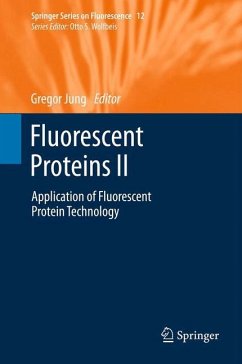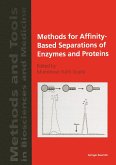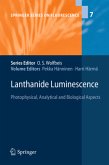Fluorescent proteins are intimately connected to research in the life sciences. Tagging of gene products with fluorescent proteins has revolutionized all areas of biosciences, ranging from fundamental biochemistry to clinical oncology, to environmental research. The discovery of the Green Fluorescent Protein, its first, seminal application and the ingenious development of a broad palette of fluorescence proteins of other colours, was consequently recognised with the Nobel Prize for Chemistry in 2008.
Fluorescent Proteins II highlights the physicochemical and biophysical aspects of fluorescent protein technology beyond imaging. It is tailored to meet the needs of physicists, chemists and biologists who are interested in the fundamental properties of fluorescent proteins, while also focussing on specific applications. The implementations described are cutting-edge studies and exemplify how the physical and chemical properties of fluorescent proteins can stimulate novelfindings in life sciences.
Fluorescent Proteins II highlights the physicochemical and biophysical aspects of fluorescent protein technology beyond imaging. It is tailored to meet the needs of physicists, chemists and biologists who are interested in the fundamental properties of fluorescent proteins, while also focussing on specific applications. The implementations described are cutting-edge studies and exemplify how the physical and chemical properties of fluorescent proteins can stimulate novelfindings in life sciences.
From the reviews: "Focuses mainly on quantitative and bioanalytical applications of fluorescent proteins. ... Given the rapidly advancing field of fluorescent proteins, this ... will be highly valuable both for researchers in and newcomers to this field, although they will mainly be useful as a reference guide for research workers." (Sapna K. Deo, Analytical and Bioanalytical Chemistry, Vol. 404, 2012)








